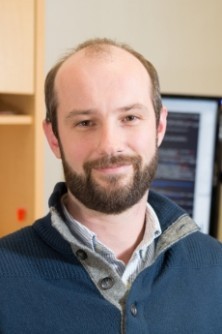Mann builds models of wildfires in an unprecedented time to insight
With wildfires becoming more robust and more frequent, there is a need to predict when and how the next wildfire might occur.
By examining statistical data on California’s wildfires dating back more than 60 years, Michael Mann, an associate professor of geography at George Washington University, has created a model that can forecast the likelihood of wildfires throughout the state from now until the year 2050. Predictions are based on climate variations, indicators of tree and plant growth, population density, and potential ignition sources within each one-kilometer area. 
According to Mann, California makes a great test case for the use of this model because the ecosystems that exist within its borders are representative of what is found in the rest of the country. However, Mann says there has been a shift in the modeling in the last five years.
“Basically, none of the models can ‘keep up’ with wildfire risks caused by the megadrought. It’s truly unprecedented in the historical record we use for modeling. There are all kinds of consequences that ripple through everything from insurance to carbon credits and more.”

 How to resolve AdBlock issue?
How to resolve AdBlock issue?